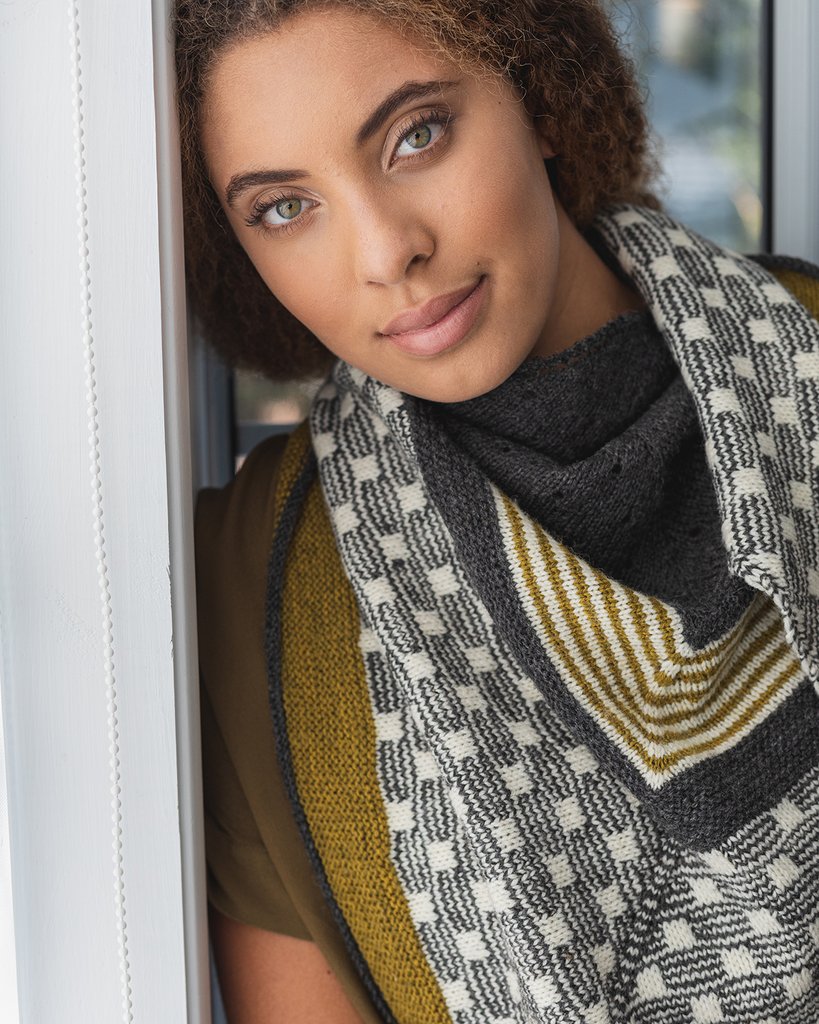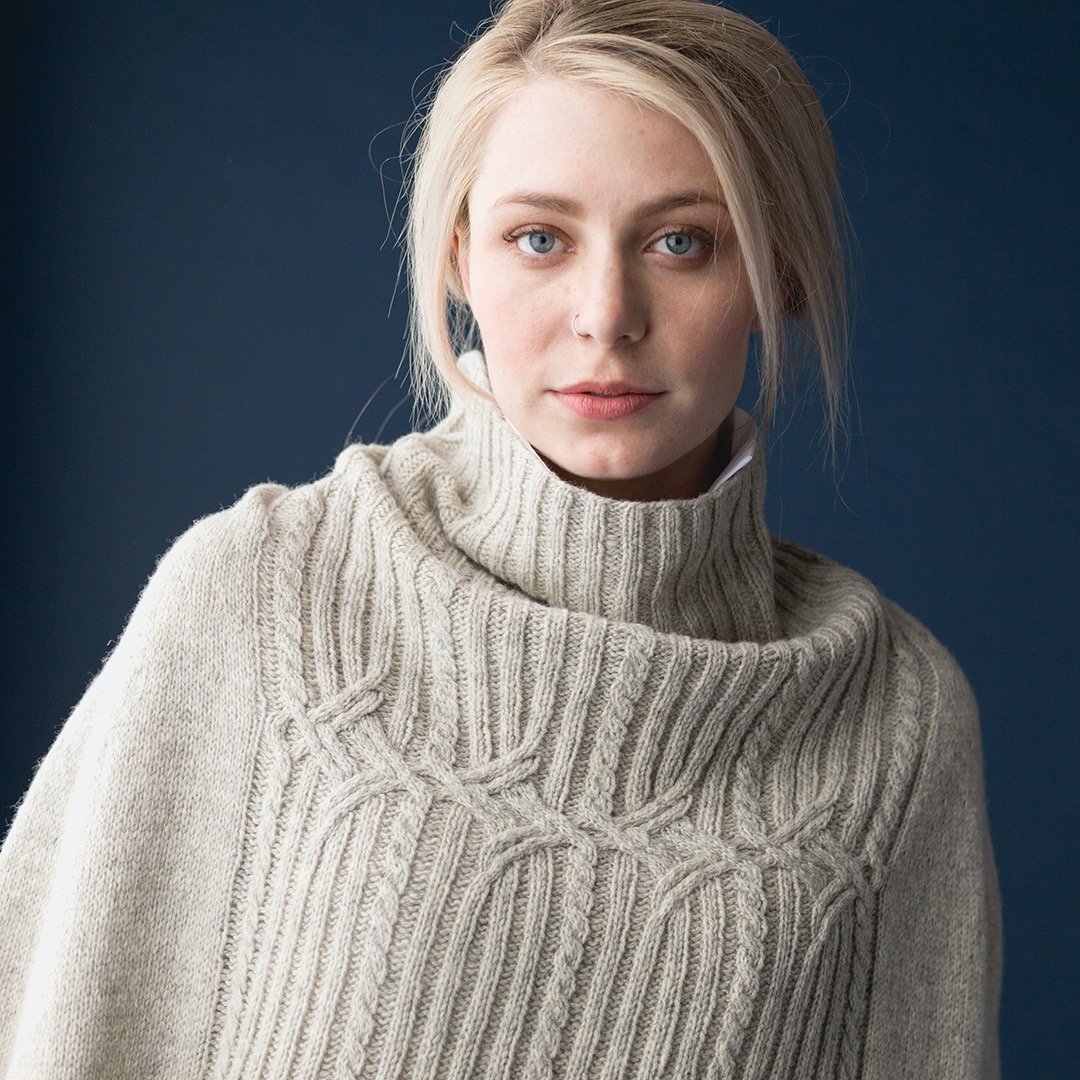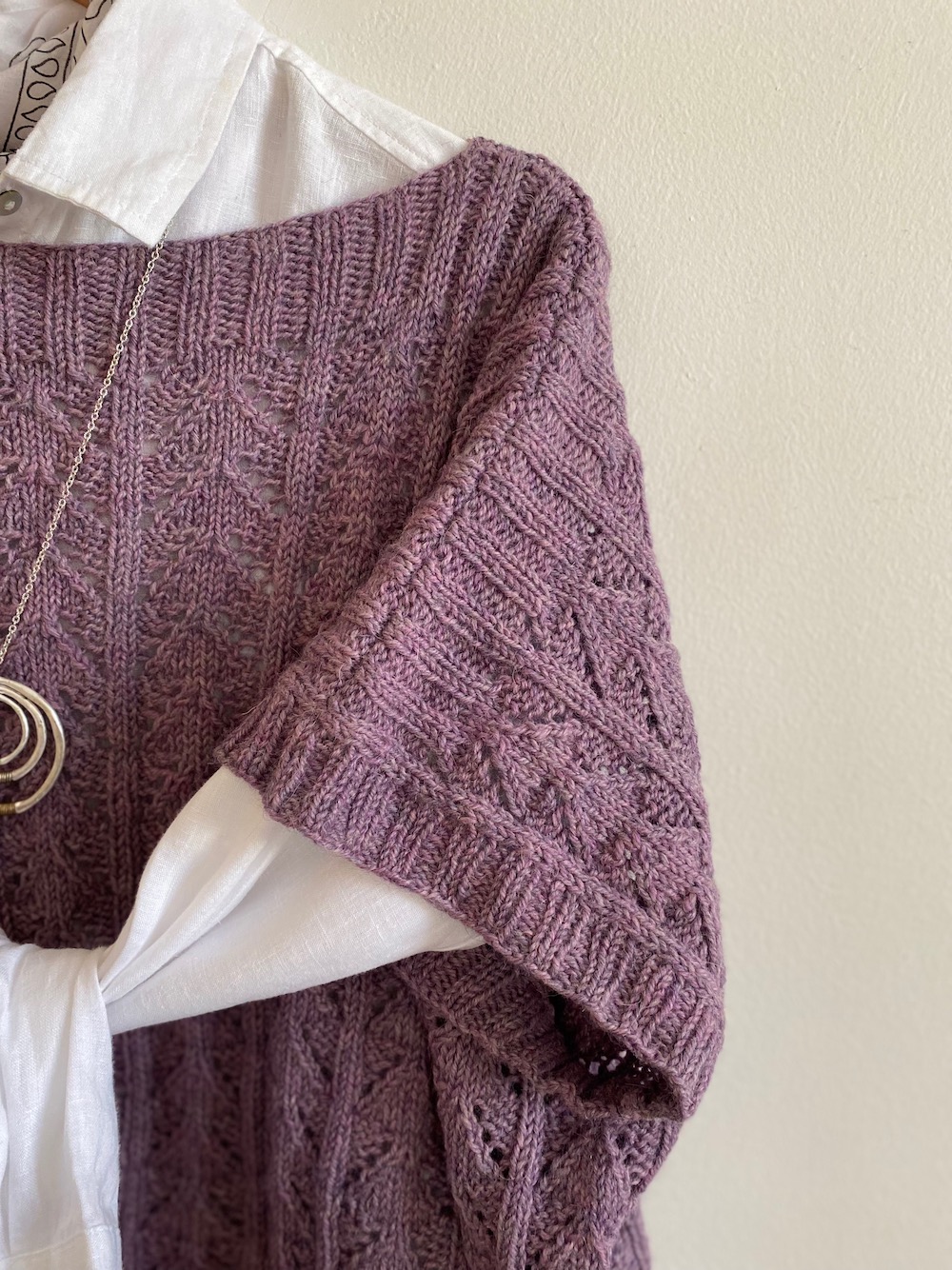Happy August! (How did THAT happen?!?)
The passing of July reminds me (as it does every year) that I’m about 2 weeks late starting Carl’s Birthday Sweater. This will be the third year that I’ve started a sweater in the summertime in order to have it ready for his birthday, which is just before Christmas. I try to choose a pattern that challenges me without blowing up my calendar or my budget. This year, I’ve defied that unassailable logic by choosing “Timberline” by Jared Flood of Brooklyn Tweed, a designer I have long admired.
 It’s the biggest and most complicated project I’ve taken on to date. I took a deep breath
It’s the biggest and most complicated project I’ve taken on to date. I took a deep breath and bought the pattern and 9 million skeins of KnitPick’s City Tweed in Tarantella. The pattern itself is as pretty as a magazine and 24 pages long! “Timberline” is knitted in one piece from the bottom up.
and bought the pattern and 9 million skeins of KnitPick’s City Tweed in Tarantella. The pattern itself is as pretty as a magazine and 24 pages long! “Timberline” is knitted in one piece from the bottom up.
Now, sweaters for men are big and heavy and, after my recent very-sad-all-in-one-piece-Highclere-experience, I fear knitting this giant thing in one piece. I got me thinking about seams.
Most knitters hate seams and it is clearly the vogue to knit everything in one piece to avoid them. I was no exception. For a long time, I would knit to any length to avoid seaming. Seaming is, however, an essential technique and as much a part of creating hand-knitted garments as the knitting itself. For me, it’s been well worth the time to learn to seam elegantly. Once the fear of seaming was banished, I found I really preferred to knit in pieces, measuring my progress with each easily-managed unit.
 Here’s a little inspiration I’ve gathered. The most useful technique is, of course, the mattress stitch. It is used when joining two pieces that have an equal number of rows. It’s virtually invisible! Shown here, it is applied to stockinette stitch, but it can be adapted for use with garter stitch or ribbing.
Here’s a little inspiration I’ve gathered. The most useful technique is, of course, the mattress stitch. It is used when joining two pieces that have an equal number of rows. It’s virtually invisible! Shown here, it is applied to stockinette stitch, but it can be adapted for use with garter stitch or ribbing.
 Even when you’ve knitted a sweater in one piece, you’ll still be faced with a shoulder seam. This is a nifty and painless way to pull it off with stitches that mimic the look of a knitted row. Because this forms a very flat seam with only the merest bit of seam allowance on the wrong side, it makes setting in sleeves a breeze! (Deliver me from the “pick up sleeve stitches from the armhole edge” curse.)
Even when you’ve knitted a sweater in one piece, you’ll still be faced with a shoulder seam. This is a nifty and painless way to pull it off with stitches that mimic the look of a knitted row. Because this forms a very flat seam with only the merest bit of seam allowance on the wrong side, it makes setting in sleeves a breeze! (Deliver me from the “pick up sleeve stitches from the armhole edge” curse.)
 Here’s an example of the vertical-to-horizontal seaming that one encounters when setting in a sleeve. Once again, it is almost invisible and shows off carefully planned left and right leaning armhole decreases to advantage.
Here’s an example of the vertical-to-horizontal seaming that one encounters when setting in a sleeve. Once again, it is almost invisible and shows off carefully planned left and right leaning armhole decreases to advantage.
These helpful illustrations were shamelessly lifted from KnitSimple’s Fall 2013 online edition where you’ll find elucidating instructions on how to perform these simple techniques to perfection. Another great resource has been e-published by the nice folks at Knitty.com. A great video on the mattress stitch is available here, compliments of Knitting Help.
It’s cold and rainy in Prince Edward County today (what? again?!?) so perhaps I’ll cozy up and make some progress on my Dundurn Cardigan. I’ve finished the left front and have a good start on the right.















garretw
I prefer to knit in the round, just saying. I like the ascetics of if better, and it really makes knitting something heavily cabled like that easier. But I will agree with you in saying that knitting the sleeves off of the body is something that really shouldn’t be done — it’s just not worth it. Sorry to hear about the Highclere rip. Live to knit another day I guess.
Pearl
Now Garret….remind me what kind of toffee you wanted.